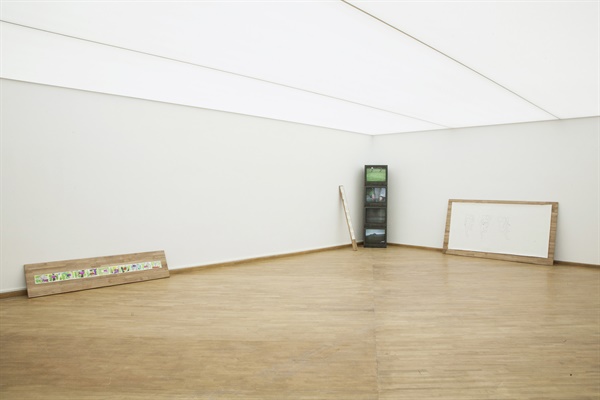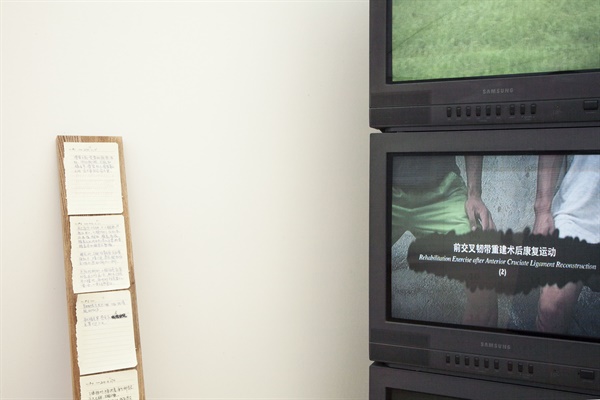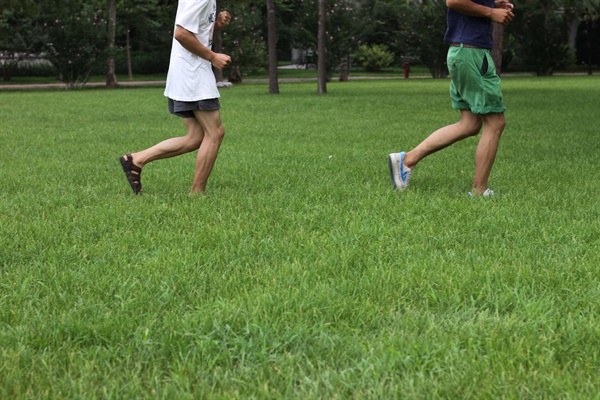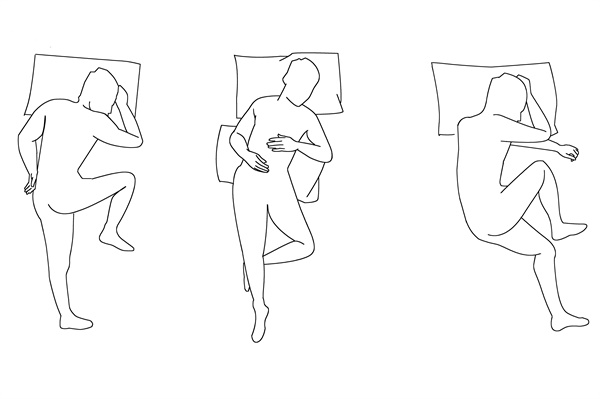As the third exhibition of the project “Light Pavilion”, “Hu Qingtai: Two Parts” is made up of “Three Chapters of Discomfort” and “Curved Road”, both documenting something the artist had been repeatedly doing or keeping doing for external and objective reasons.
“Three Chapters of Discomfort” is bases on the rehabilitation exercise the artist followed every day after a surgery. The experience, recorded and reported through different media, is presented to the public in the form of a four-channel video, an eight-page note, and a sketch. These works, material vehicle of the so-called “artistic expression”, lack conspicuity or appeal and prevent the conveyance of meaning. The video is only about the four movements that he kept doing for the rehabilitation of the joint, crude, dull, and closed, reducing these postures to their simplest possible forms that do nothing more than denote, denying any chance to offer surplus guiding information. The eight-page note, torn from a notebook, gives verbal account of the pain and the medical advice, neither fictitious nor sentimental. The only stuff that permits the imagination to roam is a 127x75cm monochrome sketch, listing roughly “three sleeping positions that relieve leg and lower back pain”. Though offering some background for the understanding of the work in the context of an exhibition hall with white cubes and other material objects, together with the way they are printed and handled, the combination can do little to stop medical or health-care explanations in a total life situation or the use of these “art” stuff in some other ways.
In contrast to “Three Chapters of Discomfort” that imitates everyday stuff and minimizes representation, “Curved Road” loosens its visual grip on pictoriality, in other words, basic elements, like color and lines. Hu cuts the only route he passes every week into equal landscape cards and paints them with light and rhythmic strokes and in bright colors. Of course, unlike simple watercolor sketches, they are marked with crossings and important locations so that they look more like journals or a kind of map, thereby distinguish themselves from those objects that exist for mere aesthetic purpose. In a word they are connected with life in an alien context.
These two works, even other works by the artist, can nevertheless be simply interpreted as “blurring the dividing line between art and life”, though there appears some resemblance. These works actually keep the most functionality of these objects, delimiting therefore for art creation, which the artist willingly gives up. In this case it is about comprise and counterbalance. They are not pragmatically effect-oriented but the fruit of the artist’s prudence and restraint. By maximally reducing the “visibility” of these works as visual representation or exhibition elements, the artist make these works as plain and common as everyday articles, thus purifying possible complicating information and distraction. It has to be pointed out however that Hu takes care to keep a distance from those indiscriminate and rough narratives that feature “the quotidian” and “the simple” as key words because be it everyday or plain art, they are not intrinsically eligible or have the quality of endorsing its value or artistic quality In other words, Hu aims to create a kind of order and remove himself from the pre-existing or established visual logic. A sensitive artist draws the boundary before he starts creation or active intervention. As subject he is modest to the materials to be used in his art in a manner that is neither disparaging nor complimentary. These materials come from the gray zone in our day daily life, but they are not to be given positive comments on this score. Rather they are meaningless unless they meet the audience in the form of their own correspondents thanks to the transformed exhibition mechanism in a disconnected space at a given time. It is an open and active state rather than something born of the viewer’s association, emotion or meaning imposed by the artist. The artist has been humble all through the work, refraining from describing his own experience, getting overcome with emotion, assigning meaning or making value judgments, and even limiting and lowering his own visibility in order to open up a new possibility of reading, reflecting and presenting life. The possibility is open to all as a portal to collective participation, inviting us to reinvent life according to our own experience, just as artists do.
Hu Qingtai was born in Qiqiha’er, Heilongjiang province in 1985. He was graduated from Hubei Academy of Art with a B.A. degree in 2008.
| Light Pavilion Project |Hu Qingtai was born in Qiqiha’er, Heilongjiang province in 1985. He was graduated from Hubei Academy of Art with a B.A. degree in 2008.
As a site for individual project, “Light Pavilion” is initiated in 2012, based on the second floor of Taikang Space. It aims at providing a flexible platform for artists to realize their ambitions. After an interval of two years, “Light Pavilion” is restarted in 2016, embracing a vision always open to uncertainty, complicity and detournement. It’s not only a site for sensational immersion and experiential evocation but also a forum dedicated to diversity and otherness.

 Installation View
Installation View Installation View
Installation View Installation View
Installation View Hu Qingtai, Rehabilitation Exercise after Anterior Cruciate Ligament Reconstrustion, Performance, 4-channel Video (Color, Sound), 7'32''(Jogging), 2012, Screenshot
Hu Qingtai, Rehabilitation Exercise after Anterior Cruciate Ligament Reconstrustion, Performance, 4-channel Video (Color, Sound), 7'32''(Jogging), 2012, Screenshot Hu Qingtai, Three Sleeping Positions that Relieve Leg and Lower Back Pain (detail), Printing on Paper (Photoshop Drawing), 127x75cm, 2015
Hu Qingtai, Three Sleeping Positions that Relieve Leg and Lower Back Pain (detail), Printing on Paper (Photoshop Drawing), 127x75cm, 2015 





